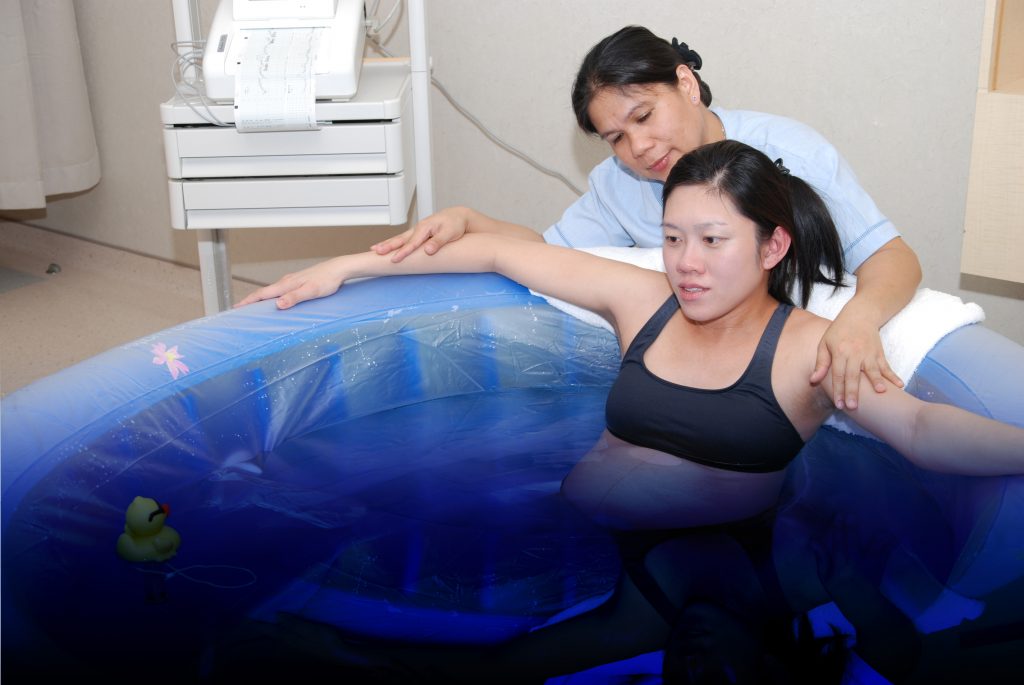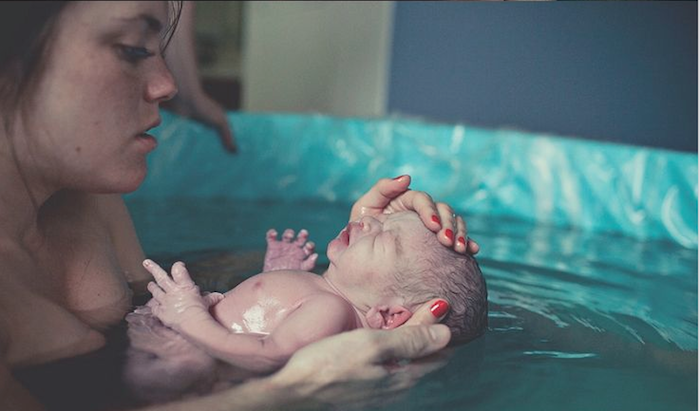
Water birth happens in your own home, in a comfortable water tub. Though there is a sense of anticipation, you can settle deeper into the pool and relax. It is like a dream come true for many women who opt for the water birth.
Water provides a relaxing effect, and it gives support and warmth. It helps women through their labour. When women get tensed or anxious, their contractions may lose their rhythm. This might stop and start the labour without moving on. Being bathed in water is likely to help you go with your contractions in active labour so that they are less stressful for you and your baby. If you are relaxed, you are more likely to breathe calmly. When tensed or anxious you take short and shallow breaths. This will make the pain of contractions worse.

It makes a lot of sense to give birth in water because the baby spends nine months in the warm and wet environment which is your womb’s filled with amniotic fluid. There is no better way to ease baby’s transition from the dark womb into this bright world.
While water birth may appear to be a new trend, it has been practised for centuries around the globe. In Japan, women gave birth in the sea, and Finland women laboured in saunas. This method gained popularity in the US in the 1980s. But the fact that it implements traditional medical settings has been a reason for its waning popularity in recent years. Before this time in the West, women remained in a tub for short periods of time, such as in the shower or bath as a way to increase their comfort in early labour.

Babies don’t breathe in the womb. So, in theory, the baby shouldn’t start breathing until he or she comes out of the water into the air. However, the American Congress of Obstetricians and Gynaecologists (ACOG) strongly advises against water immersion of babies during delivery through water birth. If the baby starts breathing when still underwater, it might cause serious complications for the baby. These include meconium aspiration and drowning. According to ACOG, it is fine for women to labour in water. However, considering the risks to the baby during the final stages of labour and delivery, they advise women to push and deliver only on “dry land.” Delivering underwater hasn’t been scientifically proven to provide any maternal or foetal benefits anyway.
Because continuous electronic foetal monitoring isn’t possible, water birth is only an option if your pregnancy has been low-risk so far. So water birth is not recommended if you have:

First call your doctor and then fill up your tub once labour pain starts. You should wait for your doctor to arrive before getting in the tub. Make sure that your partner is ready to adjust the water as necessary as soon as you get into the tub. The temperature should remain between 95 and 100 degrees but no more than 101. You should have plenty of drinking water ready. Have some washcloths that are dampened with cold water to help cool off your face or neck. Your doctor will monitor your baby’s condition with an underwater Doppler device.
Other than the complications mentioned before, the umbilical cord can tear, cutting off your little one’s oxygen lifeline when decide to deliver underwater ignoring ACOG’s recommendations. Once the placenta separates from the uterus (which can happen at any time after delivery), your baby is in further danger because it can no longer provide your baby with sufficient oxygen.
Most water births go smoothly. In case of any emergency, it may take time to get you out of the pool. Still, your doctors or midwives are trained to deal with these emergencies. They can help you out of the pool and provide you with the help needed.
It is the most powerful creation to have life growing inside of you.There is no bigger gift